When the award-winning film Moonlight first hit theaters in 2016, viewers were instantly captivated by the film’s jarring interrogation of complex narrative tropes surrounding black manhood, as experienced through the lens of a black queer protagonist named Chiron (played by three different actors).
Chiron’s mother – played by Naomi Harris – is portrayed as a single mother whose gut-wrenching bouts with drug abuse often leave her emotionally and physically unavailable to raise her son.
But Chiron is never entirely alone.
Early in the film, he is taken under the care of a local drug dealer named Juan (played by Mahershala Ali) who like, Chiron’s mother, is complex and layered. While at the beach with Chiron during one scene, Juan offers an introspective account of his origin story. He explains to Chiron, “I’ve been here a long time. Out of Cuba. A lot of black folks are Cuban. You wouldn’t know from being here now.”
It is in this moment where Juan’s Afro-Cuban background becomes an intriguing site of inquiry. His blackness, we learn, is not solely relegated to the United States, but instead diasporically linked to a country located ninety miles away.
Papá Y Yo is a compilation of eleven experiential portraits of black fathers in Cuba that, like Juan’s character, seek to complicate perceived notions of black fatherhood and masculinity as the island continues to increase diplomatic relations with the United States.
As part of an on-going global series called The Black Fatherhood Project, created by filmmaker Jordan Thierry in 2013, Papá Y Yo seeks to foreground the struggles and triumphs of Afro-Cuban fathers, while simultaneously creating a visual platform that underscores the need for a transnational understanding of blackness.
Even as the channels of travel and communication between the U.S. and Cuba have progressed, the economic and political future of Afro-Cubans remains uncertain – this, in spite of governmental policies that have positively benefited Afro-Cubans since the overthrow of the Batista regime in 1959.
As renowned Cuban scholar Roberto Zurbano eloquently noted in a 2013 Op-Ed for The New York Times, racial disparities related to the growing private sector economy, tourism, and remittances from abroad, continue to disproportionately impact white Cubans, creating increasingly precarious economic situations for Cubans of salient African descent.
Each image in this series represents a critical attempt to foreground Afro-Cuban fatherhood in a way that constructively challenges and questions presumed notions of masculinity. More importantly, while this project solely features fathers and their children, Papá Y Yo serves as an expository reminder that Afro-Cuban fatherhood and childrearing is never an isolated act, but rather a collaborative experience guided by the unbounded love of women, family, and communities throughout Cuba.
Photos by Walter Thompson Hernández for Remezcla
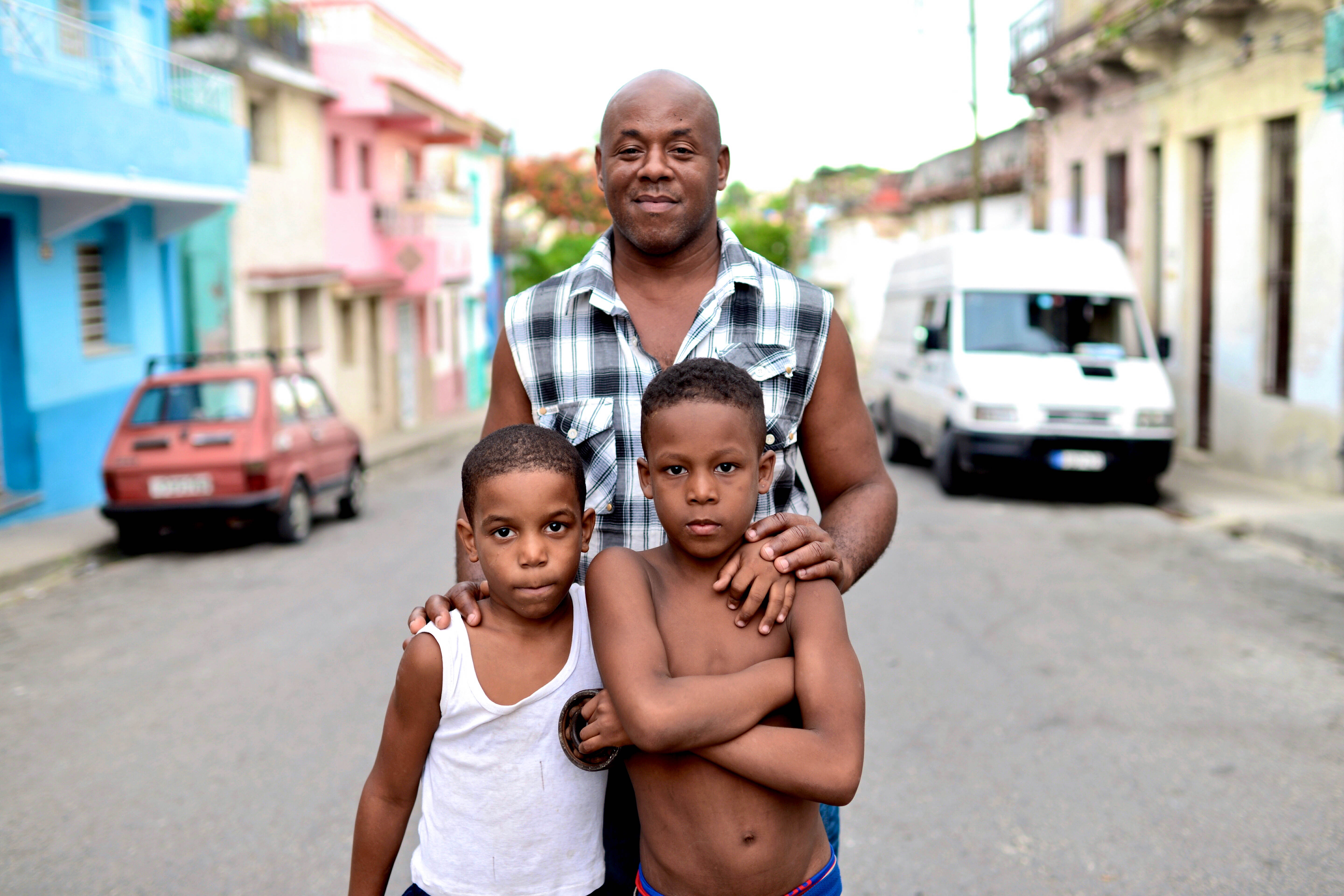 Juan Carlos, Fran Carlos, Dayan
Juan Carlos, Fran Carlos, Dayan
Juan Carlos and his son Fran (right) have been living in the 10 de Octubre neighborhood since Fran was born in 2007. Fran is accompanied by his best friend, Dayan, who attends the same elementary school and has been his friend since they were born. Juan is currently working in Central Havana on a construction project for a European company. Both Fran and Dayan had been playing in the street when Juan arrived and posed for the photo. Juan’s wife, Juanita, is not pictured but was standing about 10 feet away when the image was taken.

Yorky and family
This image was taken in the Villa Clara province in the capital city of Santa Clara. Yorky is accompanied by his father, his mother, and his son named Luis. They have lived in Santa Clara for almost thirty years. He is currently an electrician, his father is a retired mechanic, his mother works from home, and his son, Luis, is in his last year of high school.
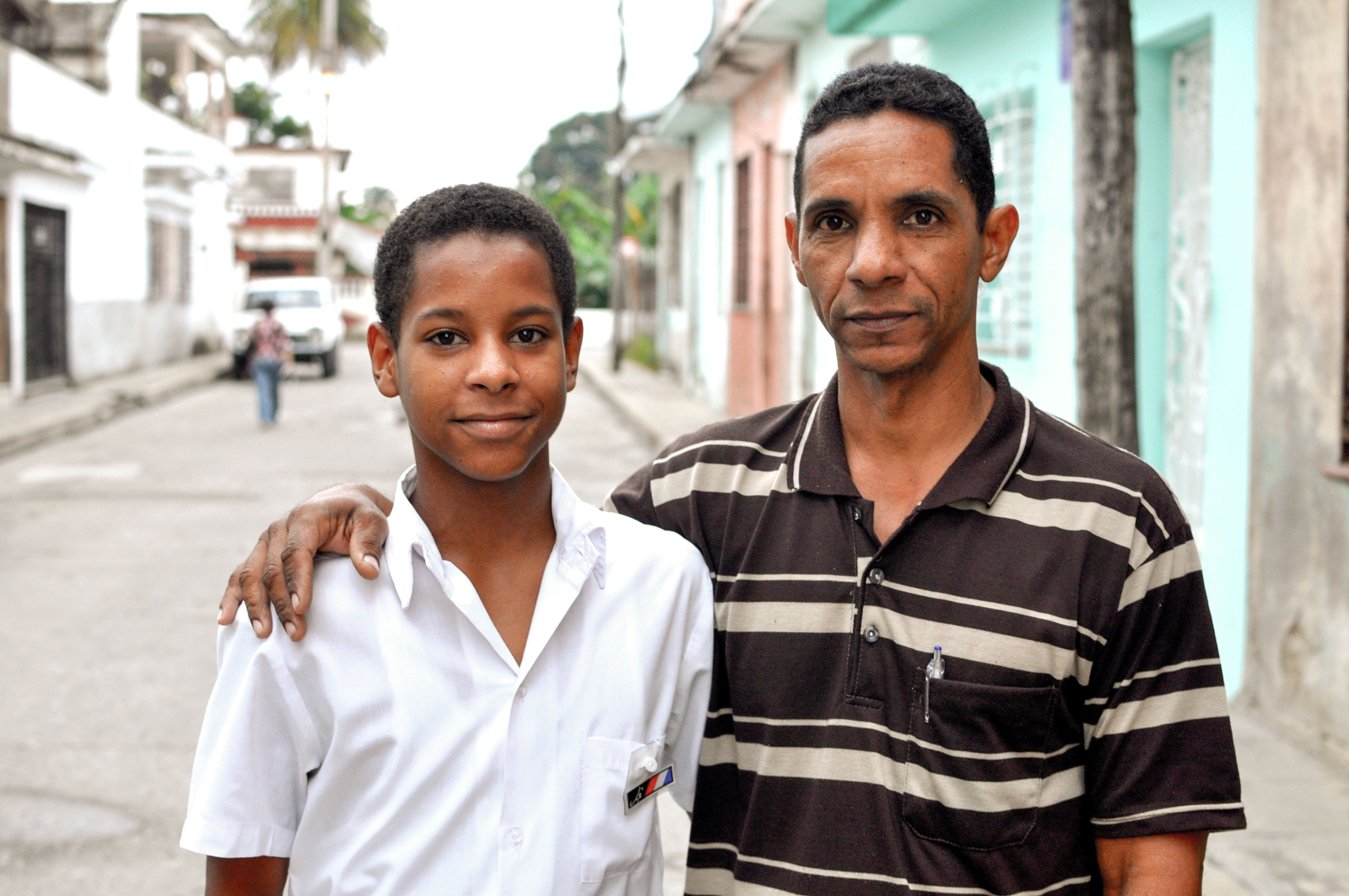 Luis and Yorky
Luis and Yorky
Yorky, Luis’s father, and Luis’s mother separated when when Luis was born, but have mutual custody. Luis spends 3-4 nights a week with his mother who also lives in Santa Clara, and the rest of the time with his father and grandparents. This photo was taken minutes after Luis had arrived home from school. Yorky and Luis both practice karate and train together at a local gym.
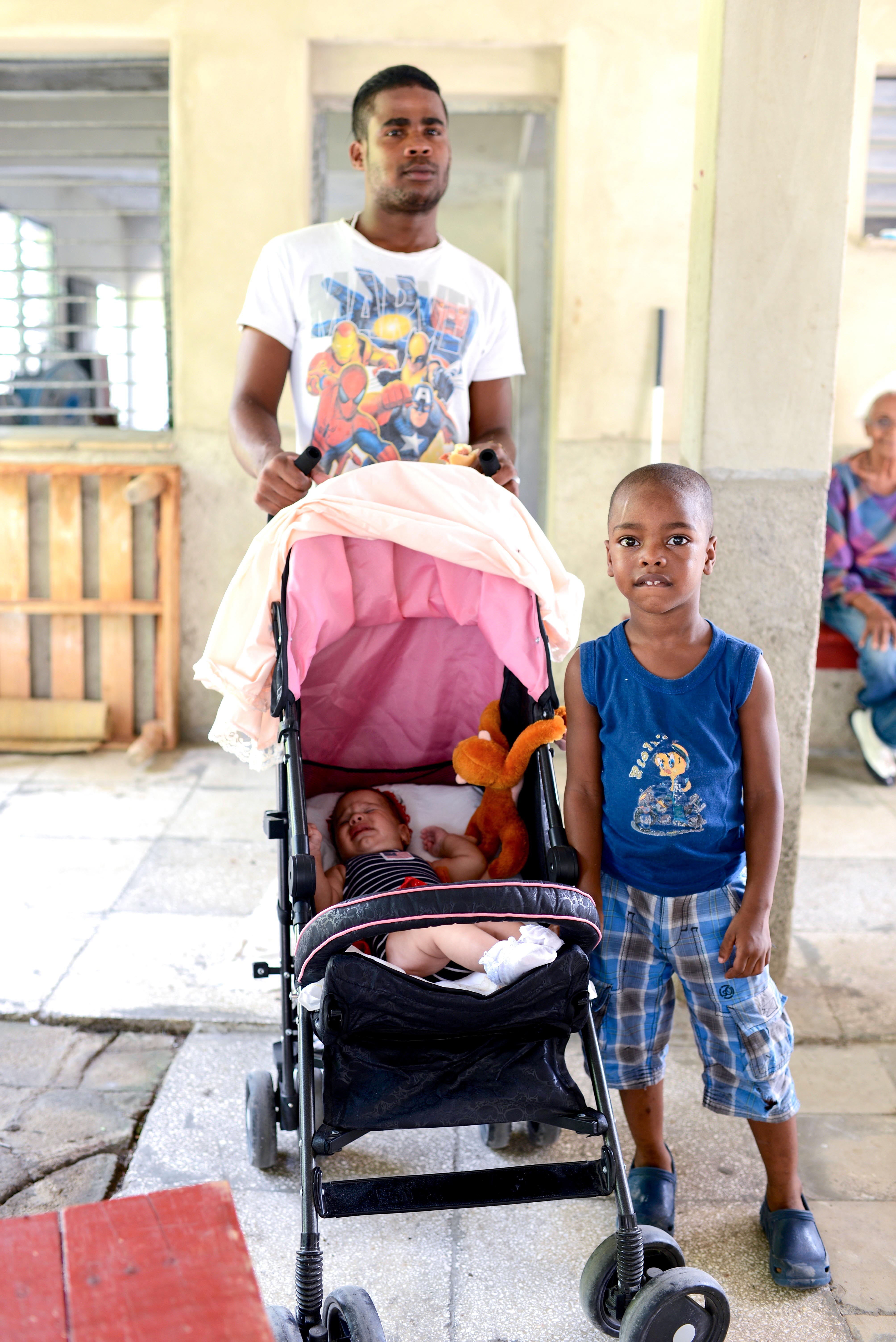 Roberto, Alejandro, and Carmen
Roberto, Alejandro, and Carmen
Roberto is Alejandro and Carmen’s father. Alejandro is three years old, while Carmen is four months old. They have different mothers and neither is pictured in the photo. They live in small rural town located in the Central Cuban province of Villa Clara called Santo Domingo. This image was taken at a Santería ceremony where a local Santo Domingo woman was being baptized as a Santera. Roberto is currently in the beginning phases of becoming a Santero.
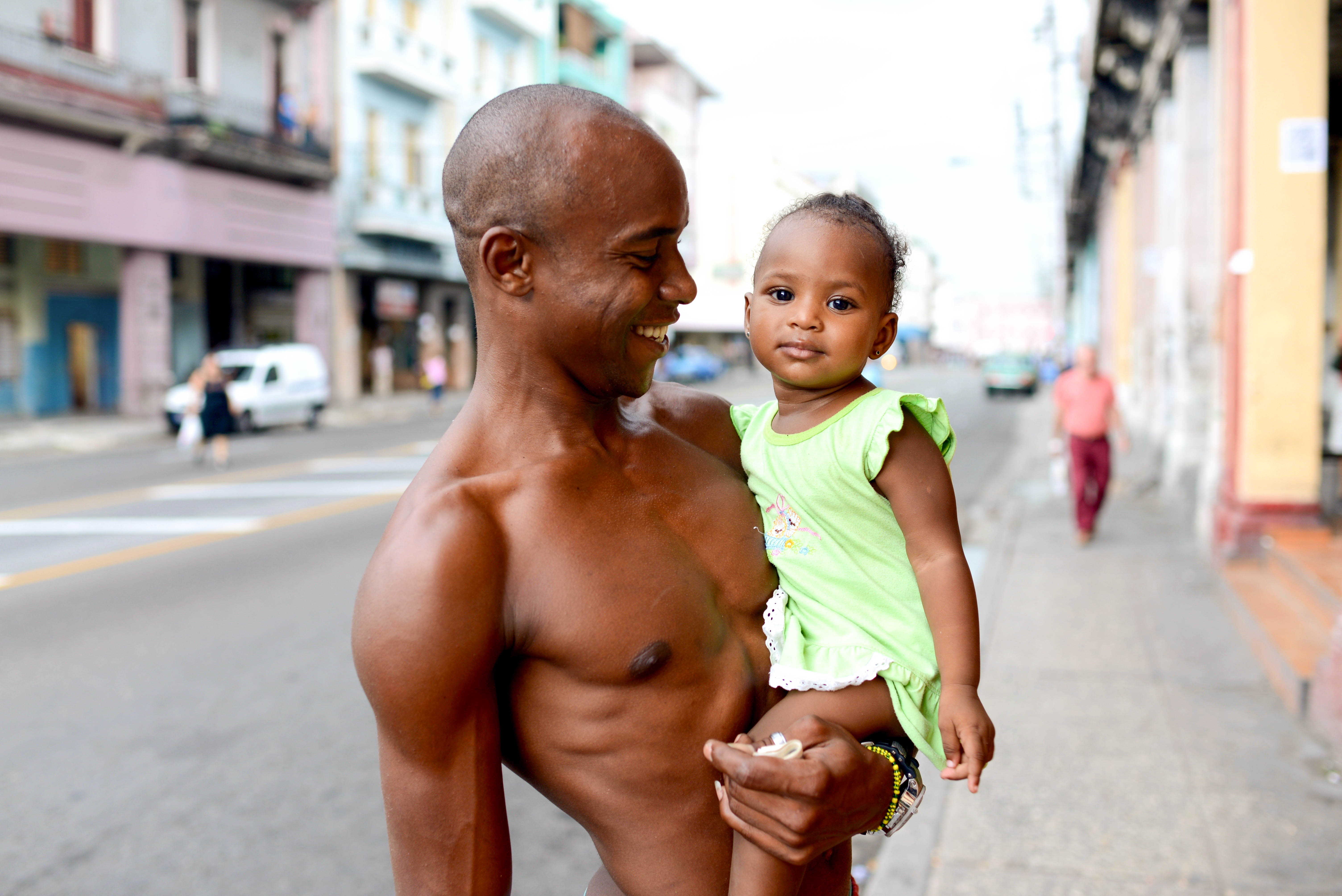 Johan and Beatriz
Johan and Beatriz
Johan is holding his god-daughter, Beatriz, on Infanta Boulevard, one of Havana’s busiest streets. They were on their way to buy some fruit and milk from the local mercado when I stopped them and asked them for a photo. Johan works as a chemical engineer and plays a large role in raising Beatriz.
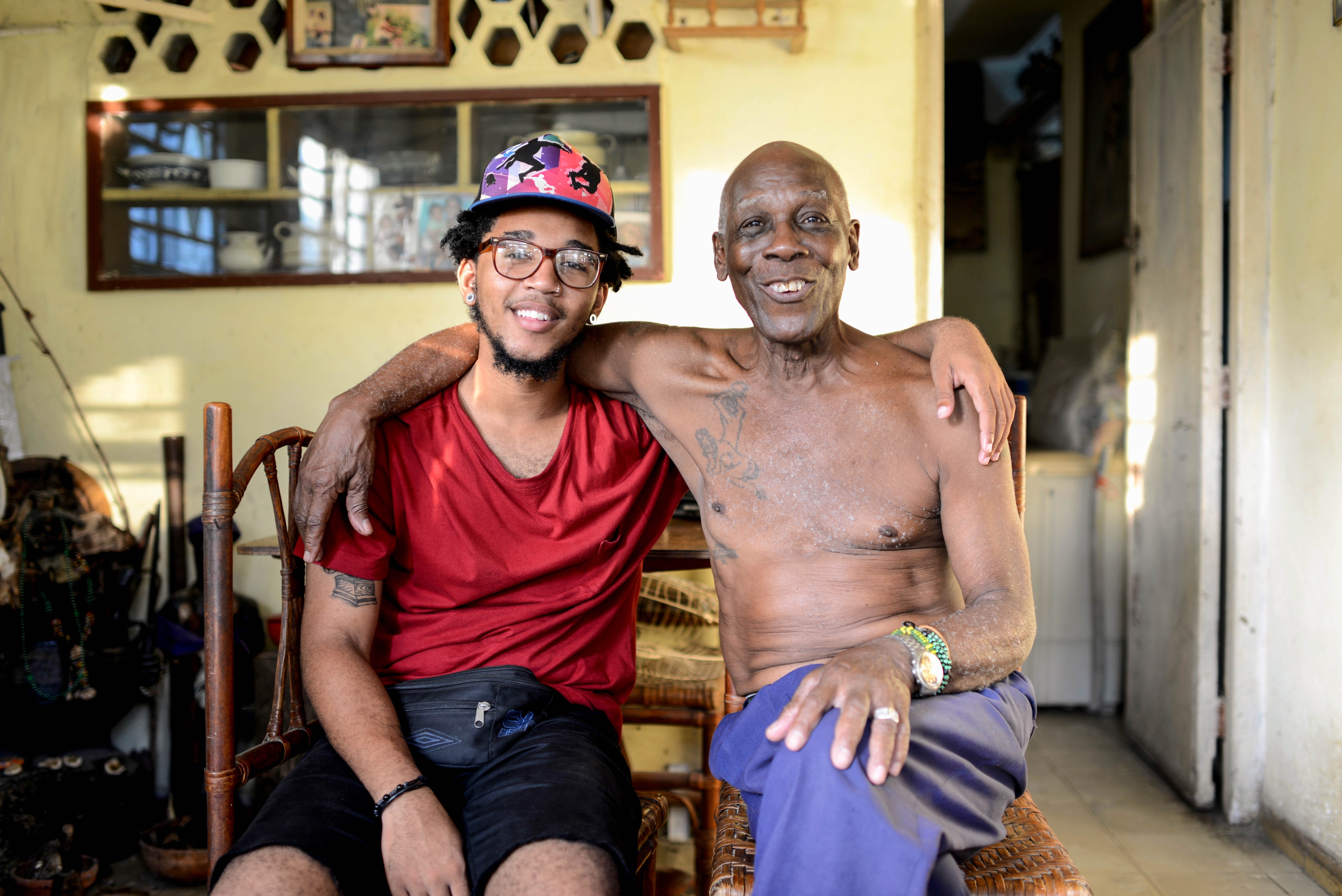 Roberto and Santiago
Roberto and Santiago
Santiago is Roberto’s grandfather but has acted as Roberto’s father since he was a child. Roberto’s biological father has been living in New York since Roberto was born, but Roberto still maintains close ties to his father’s family in Havana. This image was taken in the 10 de Octubre neighborhood in Havana. Santiago is a spiritual adviser and local Santero who offers guidance to people in the neighborhood. He has traveled to the United States numerous times to visit his family in New York and in Tampa. His wife passed away thirty-two years ago and has been living with his two sons ever since.
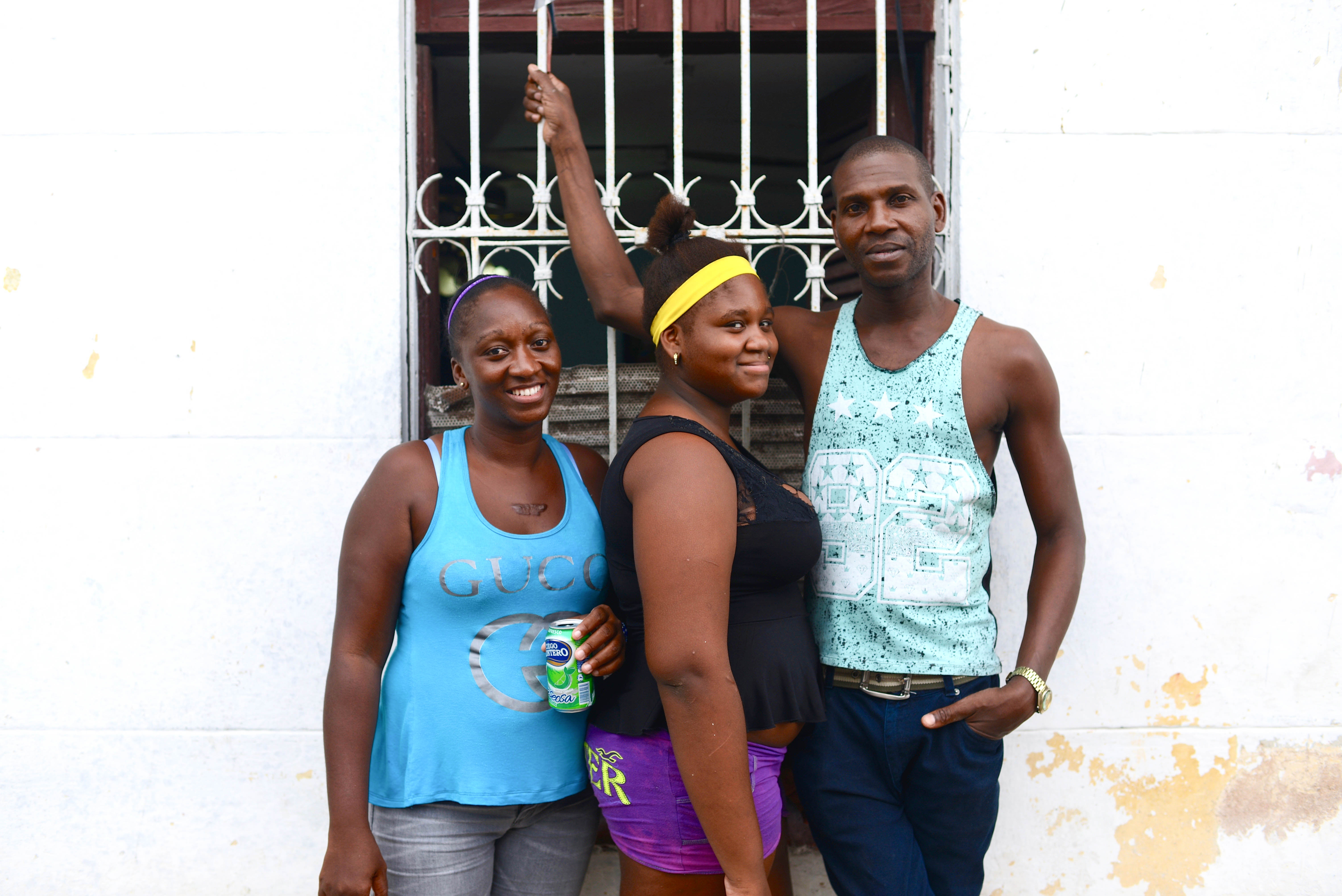 Maybel, Hayna, and Jorge
Maybel, Hayna, and Jorge
This photo was taken in the 10 Octubre neighborhood in Havana located two miles south of Central Havana. Hayna’s mother, Maybel, and Jorge are no longer together, but continue to play a central role in raising Hayna. Jorge lives within walking distance of Maybel’s home. This image was taken in front of Maybel’s home on June 25, 2016. They were conversing when I asked them to take a photo. Jorge works as a handy man in his neighborhood and his mother works at a local hospital. Hayna is in her last year of high school.
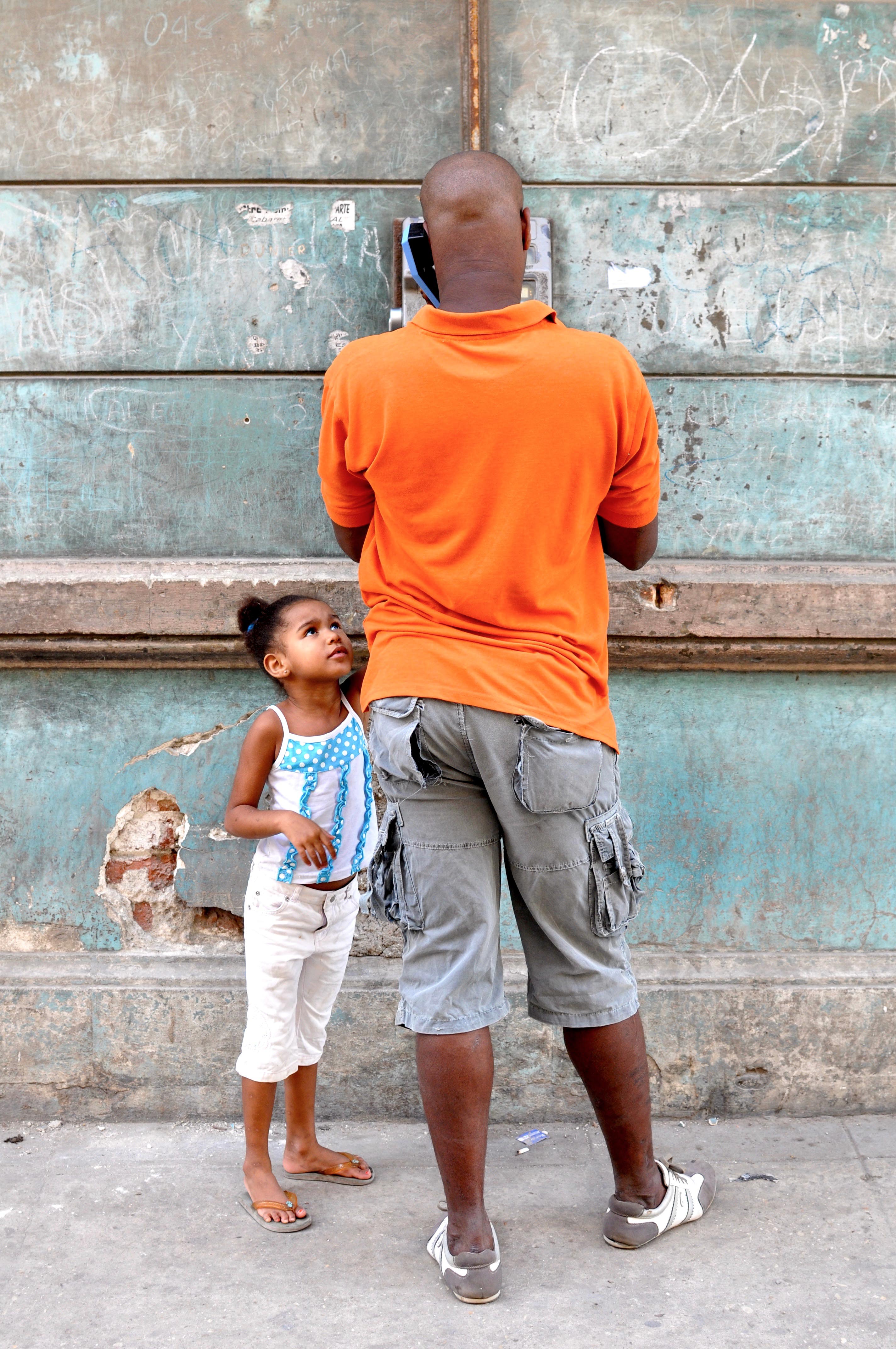 Unknown
Unknown
This image was captured in Centro Habana in the Cayo Hueso neighborhood on June 30, 2016. Pay phones are free throughout Cuba, but almost considered obsolete in the United States. The image, in many ways, represents Cuba’s present reality: A time warped country trying to find its bearings in an increasing interconnected world.
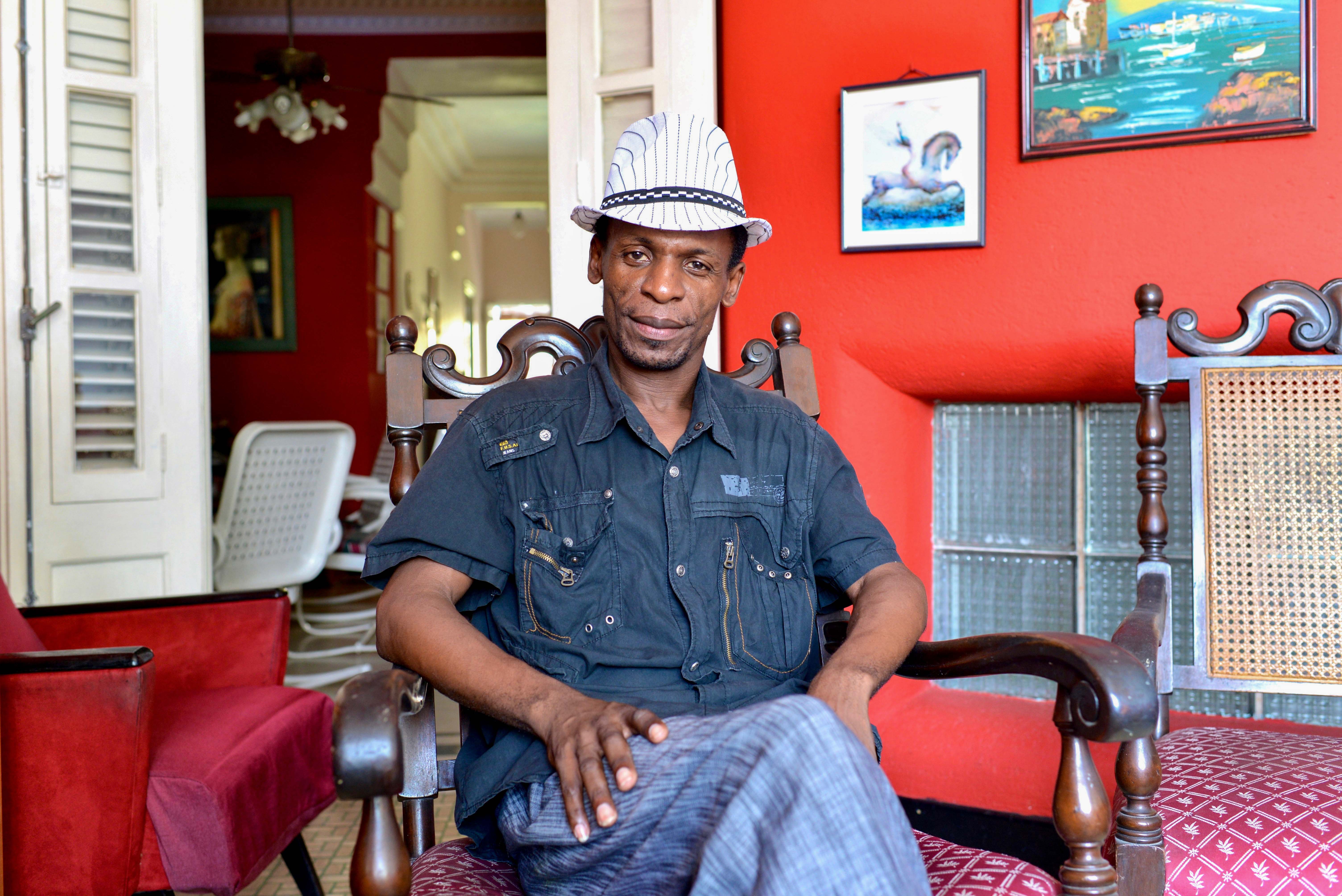 Reynaldo
Reynaldo
Reynaldo is an Afro-Cuban dance instructor from Matanzas, located approximately two hours away from Havana. He and his daughter (not pictured) live in the Vedado neighborhood in Havana where they both regularly practice Afro-Cuban dance. She is fourteen years old and just beginning to enter the professional Afro-Cuban dance world. Reynaldo is also a staunch advocate for Afro-Cuban rights in Havana and uses his dance platform as a way to celebrate Afro-Cuban culture.
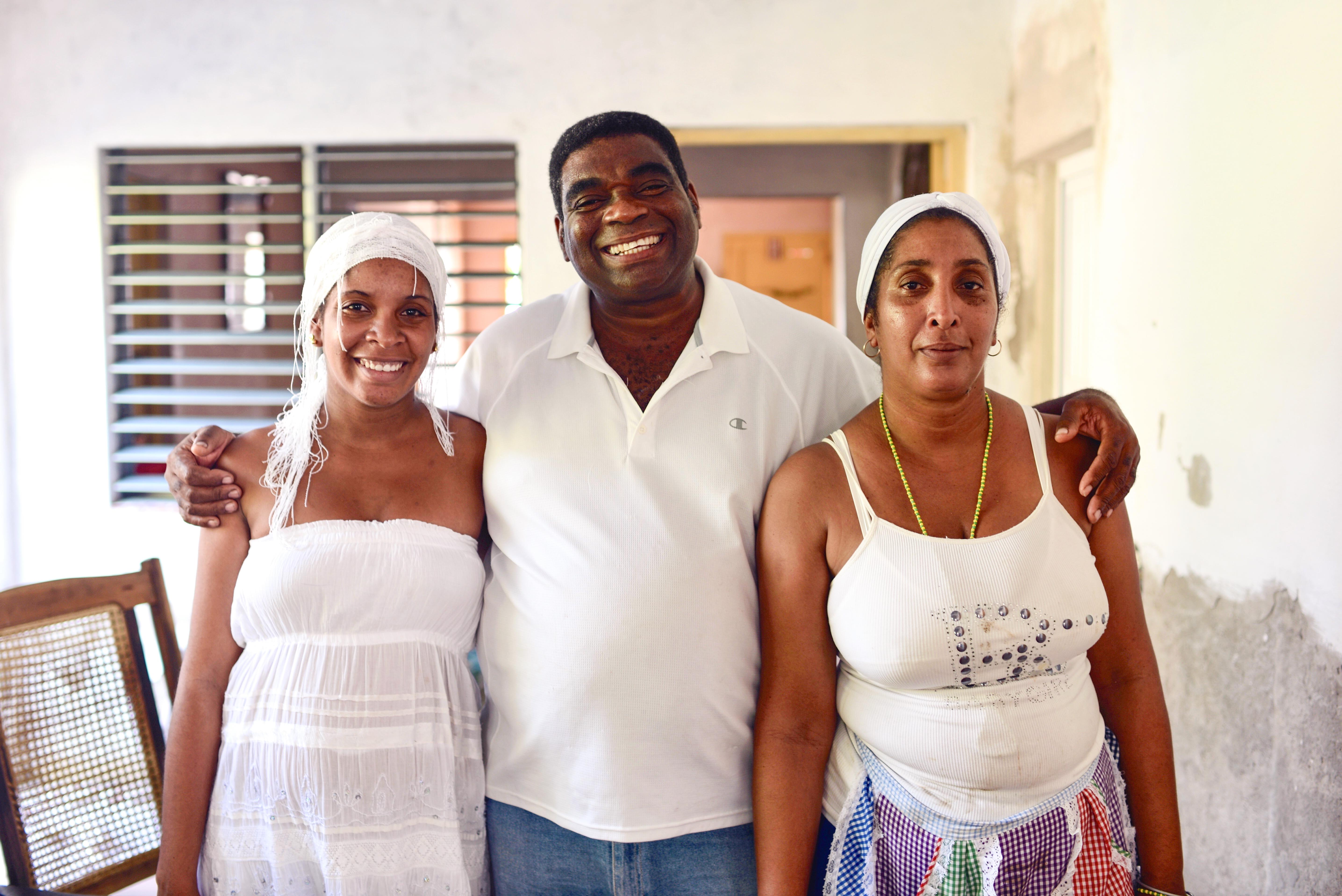 Annette, Vilma, Antuanette
Annette, Vilma, Antuanette
This image was taken in Santo Domingo, Villa Clara during a Santeria initiation ceremony. Vilma (center) has been married to Antuanette (right) for over thirty years. They live in Santo Domingo, Villa Clara. Their daughter, Annette (pictured), has recently returned from working as a dentist in Venezuela for three years. She is expecting a child in late December with her husband, Javier.




